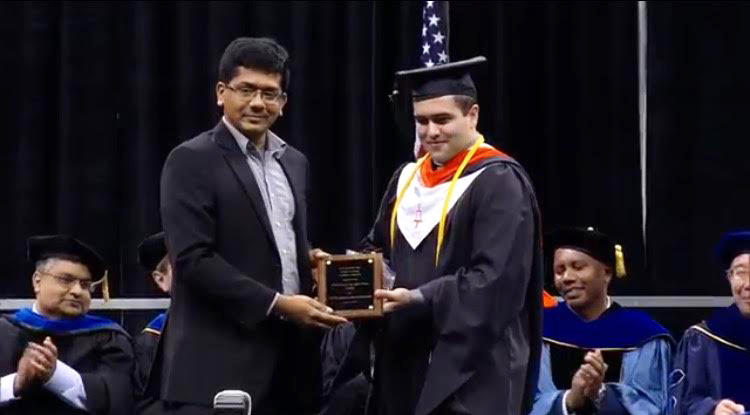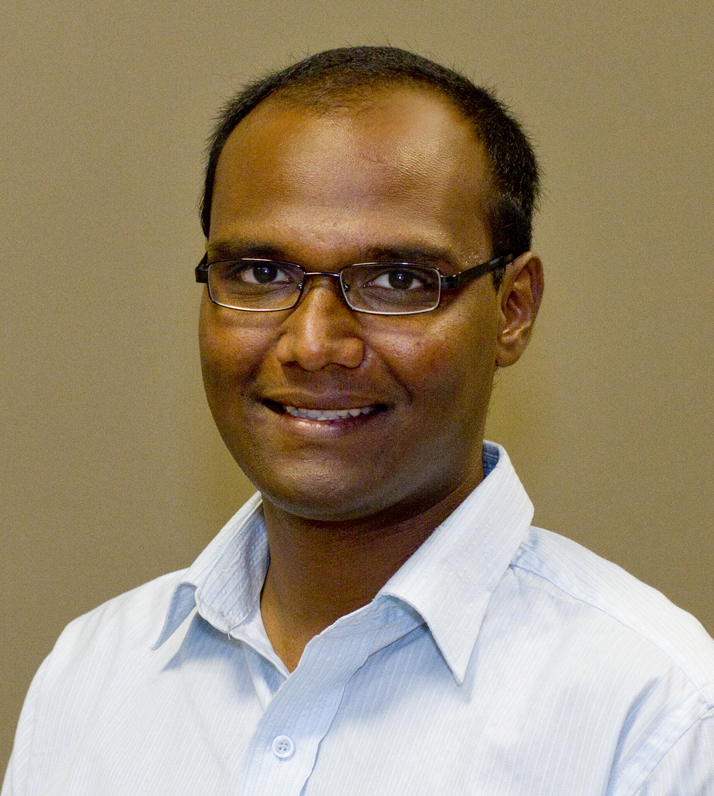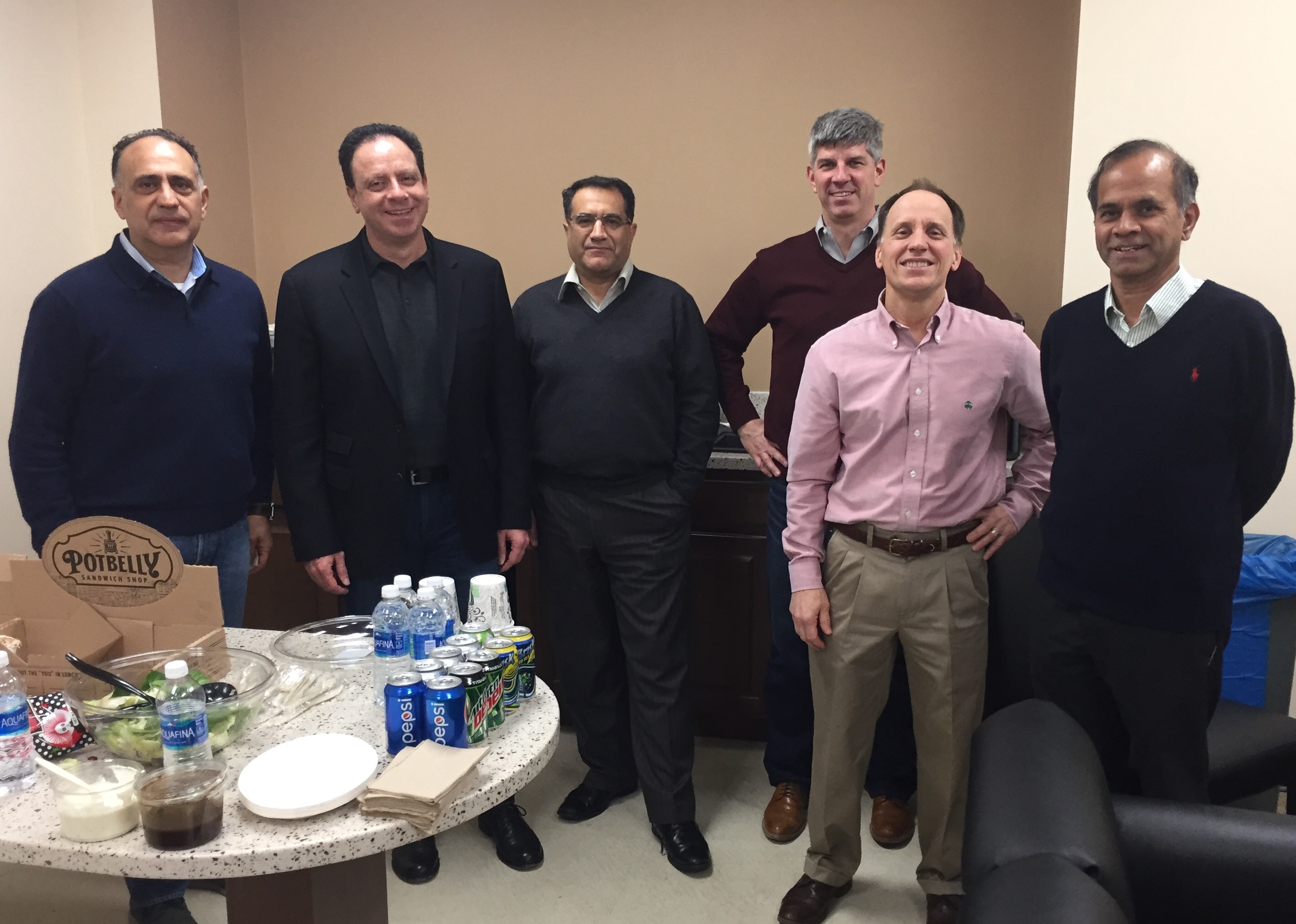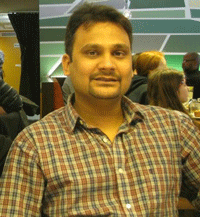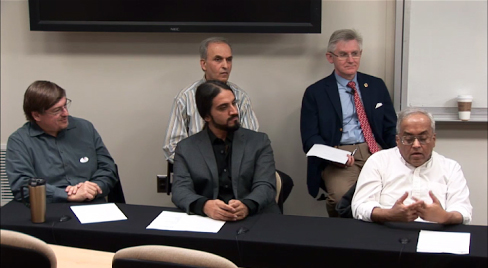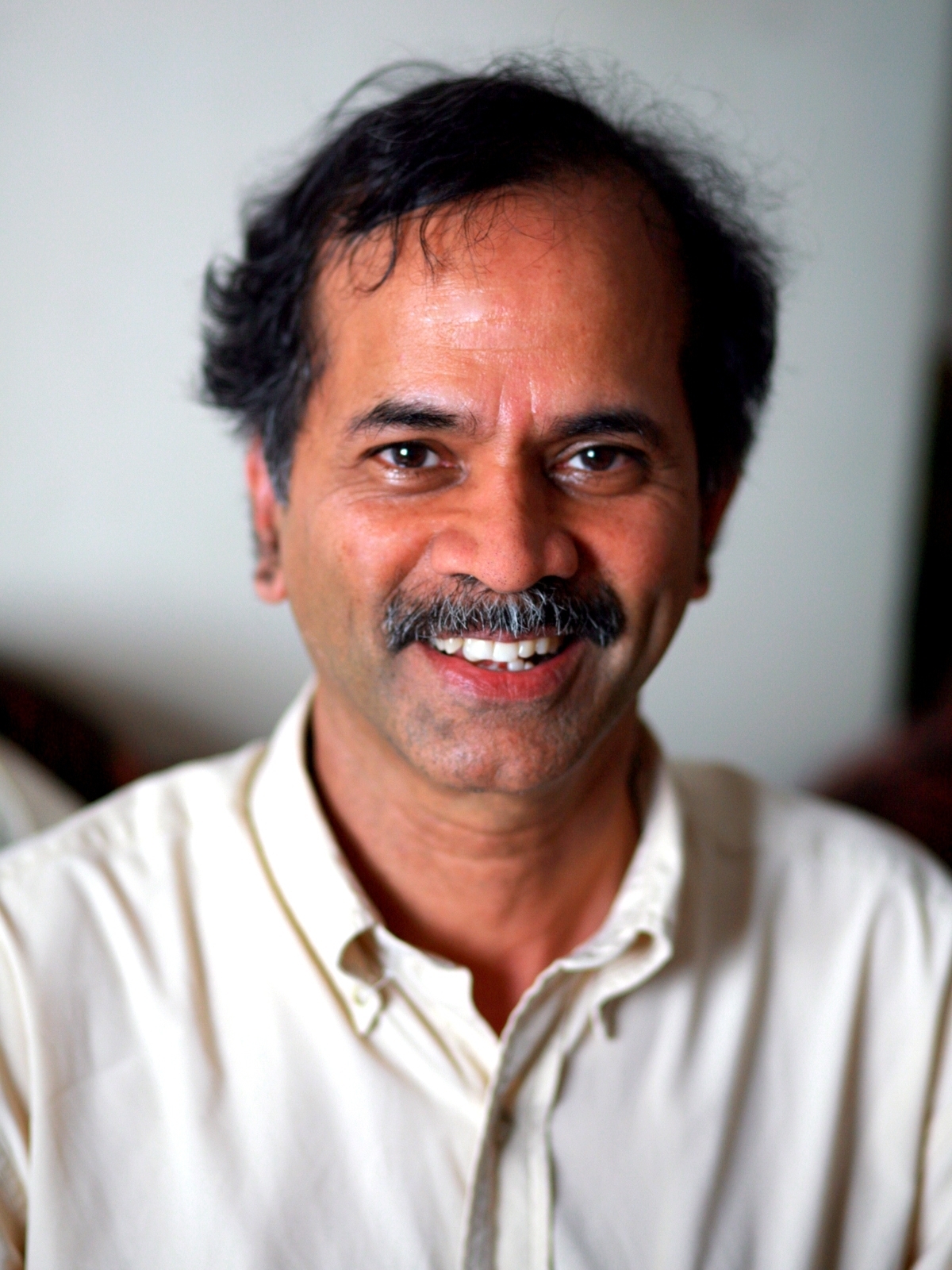News Story
ECE Professor Wins 2013 UMD Invention of the Year Award
Time-reversal techniques for optimizing broadband communication networks and and electronic home plate prototype were among Electrical and Computer Engineering’s entries at the University of Maryland Invention of the Year Awards. Three of those inventions were recognized as promising new technologies.
The University of Maryland’s Office of Technology Commercialization (OTC) hosted the 26th Annual Invention of the Year Awards reception on Tuesday, April 16, 2013 from 4:30-6:00 pm at the University of Maryland Golf Course Club House.
Winners were selected by an independent panel of judges consisting of representatives from on and off campus, who voted for the Invention of the Year in three different categories: Information, Life, and Physical Sciences. ECE researchers won the Information Science Category and placed as runners-up in both Information Science and Physical Science. BioHealth Innovation Inc., a Maryland-based innovation intermediary that helps commercialize market-relevant research, offered services to each winning team to help them write a successful Small Business Innovation Research (SBIR) proposal.
Professor K. J. Ray Liu, and his students Feng Han, Yu-Han Yang, BeiBei Wang and Yongle Wu, won the Information Science Category for their research “Time-Reversal Division Multiple Access for Wireless Broadband Communications.”
This research team has developed an innovative approach to overcome this interference deficiency by utilizing a time reversal (TR) signal transmission technique that makes full use of multi-path data transmission environments. Energy from the time-reversal waves is able to be focused only at intended locations with excellent spatial resolution, especially in ultra-wideband (UWB) systems. This results in a low cost, energy-efficient (a very low radio frequency (RF) transmission), secure solution in multi-user wireless broadband communication networks. The quickly emerging area of wireless home area networks (WHAN) for multi-media and data, and other well suited applications such as radio frequency identification (RFID), with its enhanced pin-pointing resolution and extended communication range, are primary targets for entry into the marketplace.
Another ECE research team also placed as runners-up in the Information Science Category for their research on “Sensor Adaptation in Iris Biometrics.” Electrical and Computer Engineering Chair Ramalingam Chellappa (UMIACS), and students Jaishanker Pillai and Maria Puertas-Calvo developed a prototype machine learning algorithm that “cures” the sensor adaptation problem so that iris reading sensors can utilize data collected from another sensor. They developed a general framework for learning kernel functions for iris codes, which makes numerous kernel-based machine learning algorithms applicable to iris codes. The proposed method also produces significant improvement in recognition performance, is robust to in plane rotations and can incorporate privacy using cancelable iris patterns. The result is an efficient solution requiring limited changes to the existing iris recognition systems.
Professor Christopher Davis (ECE/ISR), post-doctoral researcher, John Rzasa, and students Gerald Spessard, Leroy Chamberlain, Jr., and Jakob Scharmer were runners-up in the Physical Science Category in recognition for their electronic home plate (EHP) prototype.
The EHP is a simple, low-cost baseball home plate that contains electronic and opto-electric components that will detect and indicate the presence, position, and speed of a baseball passing over the plate. It is designed to assist umpires in determining if a pitch is a ball or a strike in games and can be a valuable tool for pitchers and batters alike in baseball training. The EHP is unique in that not only can it detect a ball as it passes between the outer edges of the home plate but also is automatically adjusted to correspond to the knee-to-chest strike zone.
UMD’s innovations help to stimulate the local economy, provide valuable products for public use, and help fuel research and entrepreneurial initiatives through inter- and intra-university collaborations. The Invention of the Year Awards reception is hosted by the Office of Technology Commercialization, part of the Division of Research at the University of Maryland. Speakers at the reception included Vice President for Research Dr. Patrick O'Shea and OTC Executive Director Dr. Gayatri Varma.
The event was part of the University of Maryland's 30 Days of EnTERPreneurship, a month-long celebration and exhibition of innovation and entrepreneurship on the College Park campus.
For more detailed information regarding the finalists, see www.techtransfer.umd.edu.
Published April 23, 2013
